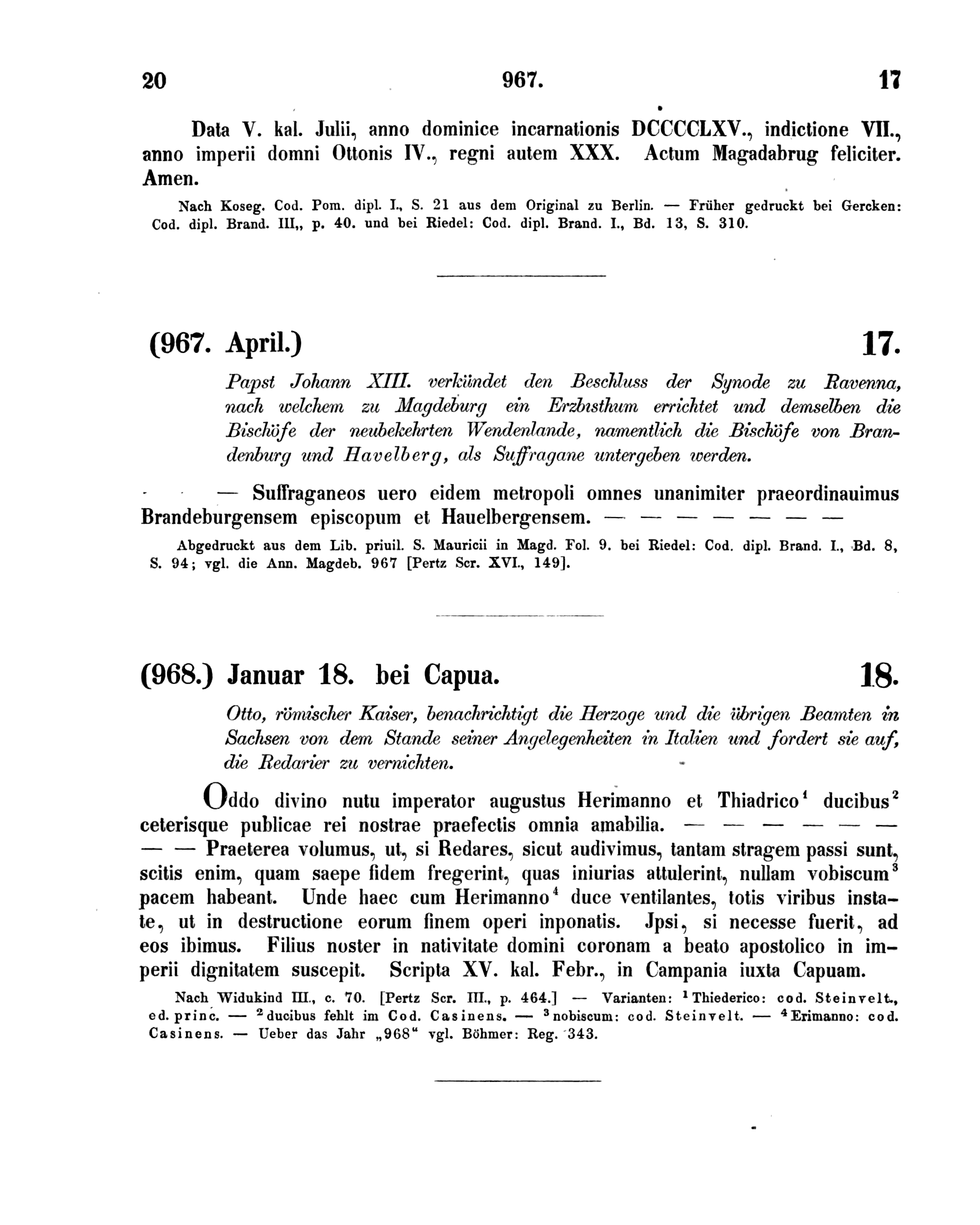Meklenburgisches Urkundenbuch - Band I -, Nr. 18, S. 96


Meklenburgisches Urkundenbuch - Band I -, Nr. 18, S. 96
ijddo divino nutu imperator augustus Herimanno et Thiadrico1 ducibus2 ceterisque publicae rei nostrae praefectis omnia amabilia. — — — — — —
Praeterea volumus, ut, si Redares, sicut audivimus, tantam stragem passi sunt,
scitis enim, quam saepe fidem fregerint, quas iniurias altulerint, nullam vobiscum3 pacem habeant. Unde haec cum Herimanno4 duce ventilantes, totis viribus insta- te, ut in destructione eorum finem operi inponatis. Jpsi, si necesse fuerit, ad eos ibimus. Filius noster in nativitate domini coronam a beato apostolico in im perii dignitatem suscepit. Scripta XV. kal. Febr., in Campania iuxta Capuam.
Nach Widukind HL, c. 70. [Pertz Scr. III., p. 464.] — Varianten: lThiederico: cod. Steinveit», cd. princ. — 2ducibus fehlt im Cod. Casinens. — 3nobiscum: cod. Steinveit. — 4Erimanno: cod. Casinens. — Ueber das Jahr „968" vgl. Böhmer: Reg. 343.
9 973. 21
Meklenburgisches Urkundenbuch, 1863 (Google data) 18, in: Monasterium.net, URL </mom/MeklenUrk/ff13bdd9-2384-4c2f-820a-39caff48d10a/charter>, accessed at 2024-05-02+02:00
The Charter already exists in the choosen Collection
Please wait copying Charter, dialog will close at success